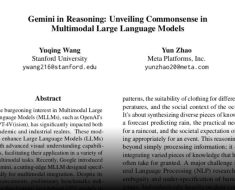Researchers at Tsinghua University in China have unveiled a groundbreaking artificial intelligence (AI) chip named “Taichi,” which processes data using light rather than electricity. This innovative approach allows Taichi to be over 1,000 times more energy-efficient than Nvidia’s high-performance H100 GPU chip, a significant leap given the current US export restrictions affecting China.
Revolutionary Design and Impressive Performance
The Taichi chip represents a major advance in photonic integrated circuits (PICs), which are central to its function. Unlike traditional electronic chips, Taichi uses a novel architecture that organizes its circuits into independent clusters. This configuration enhances computational efficiency and supports more complex AI tasks like image recognition and content generation.
In performance tests, Taichi demonstrated its capability by classifying over 1,000 categories with a 91.89% accuracy rate on the Omniglot dataset, a tool used to benchmark AI models across various handwriting systems. This level of accuracy and efficiency suggests that Taichi could significantly advance the field of artificial general intelligence (AGI)—AI that mimics human cognitive abilities and can perform a broad range of tasks.
Potential for Artificial General Intelligence
The Tsinghua team’s research, published in the journal Science, indicates that Taichi’s design could be crucial for achieving AGI. Its modular structure allows for scalability, potentially enabling the creation of networks with millions of artificial neurons. Currently, Taichi’s network includes 13.96 million neurons, surpassing any other known photonic chip design.
This scalability, combined with an energy efficiency of 160.82 trillion operations per watt (TOPS/W), positions Taichi as a viable solution for the high demands of AGI development. For comparison, the previous record in the field was 2.9 TOPS/W, making Taichi’s efficiency particularly notable.
A Sustainable Future for AI
Taichi’s development is timely as the AI industry grapples with increasing energy demands. Its high efficiency could lead to more sustainable AI practices, crucial as the industry seeks to reduce its environmental impact. Yury Suleymanov, associate editor at Science journal, noted that this research is a promising step toward practical photonic computing applications in AI.
As AI continues to evolve, the introduction of chips like Taichi that use light for data processing heralds a new era of technological advancements. This shift not only promises significant improvements in AI capabilities but also in energy consumption, making the future of AI both brighter and more sustainable.
Here are the key details about the revolutionary Taichi chip developed by researchers at Tsinghua University in China:
- Light-Based Technology: Unlike traditional chips that use electricity, Taichi utilizes light to process data. This approach is known as photonic integrated circuit technology.
- Energy Efficiency: Taichi is reported to be over 1,000 times more energy-efficient than Nvidia’s high-performance H100 GPU chip. This significant improvement in energy efficiency is pivotal as it suggests a breakthrough in reducing the power consumption of AI systems.
- Chip Design: The researchers employed a unique architectural design by organizing the photonic circuits into independent clusters instead of the conventional stacked PICs. This design aids in optimizing the chip’s performance and efficiency.
- Performance Capabilities: In testing, Taichi achieved a 91.89% accuracy rate in classifying over 1,000 categories using the Omniglot dataset, which is commonly used to benchmark machine learning models.
- Potential for AGI: The team highlighted Taichi’s potential in advancing artificial general intelligence (AGI), which refers to AI systems that possess cognitive abilities across a wide range of tasks, similar to human intelligence.
- Scalability and Neuronal Network: Taichi’s design allows for scalability, which is demonstrated by its distributed network containing 13.96 million artificial neurons. This feature surpasses the neuron count in previous photonic chip designs and is crucial for supporting large-scale AI applications.
- Record Energy Efficiency: The chip achieved an energy efficiency of 160.82 trillion operations per watt (TOPS/W), drastically exceeding past achievements in the field.
- Implications for Sustainability: Taichi’s high energy efficiency suggests it could lead to more sustainable practices within the AI industry, which is increasingly concerned with reducing its energy footprint.
- Publication and Academic Input: The research findings were published in the journal Science, indicating the academic rigor and peer-reviewed nature of this innovation.
- Future Prospects: The development of Taichi is seen as a significant step toward practical photonic computing and could pave the way for new AI technologies that use less energy and have a lower environmental impact.



![Future-proofing Education: A Prototype for Simulating Oral Examinations Using Large Language Models. (arXiv:2401.06160v1 [cs.CY]) Future-proofing Education: A Prototype for Simulating Oral Examinations Using Large Language Models. (arXiv:2401.06160v1 [cs.CY])](https://aigumbo.com/wp-content/uploads/2023/12/arxiv-logo-fb-235x190.png)

